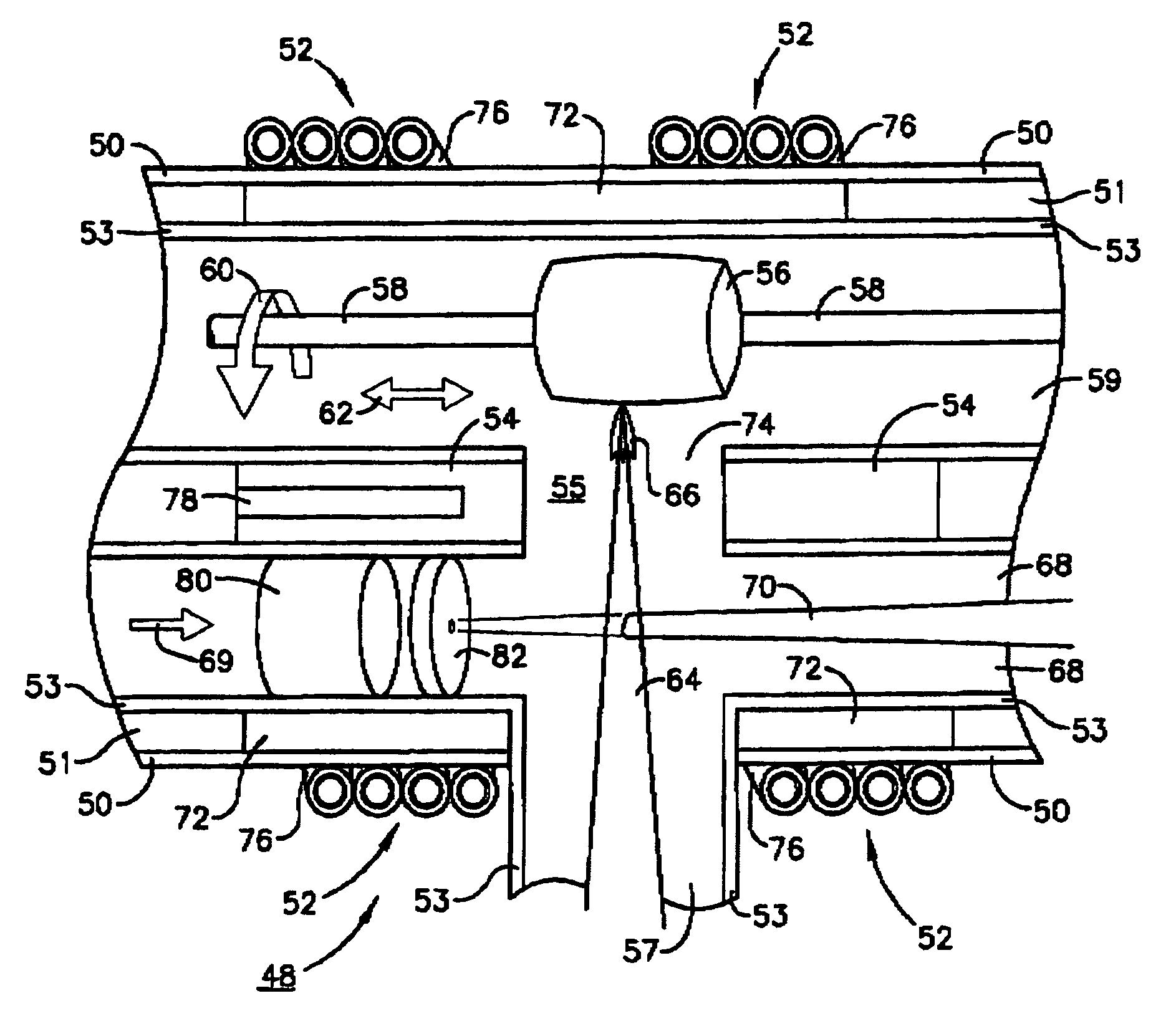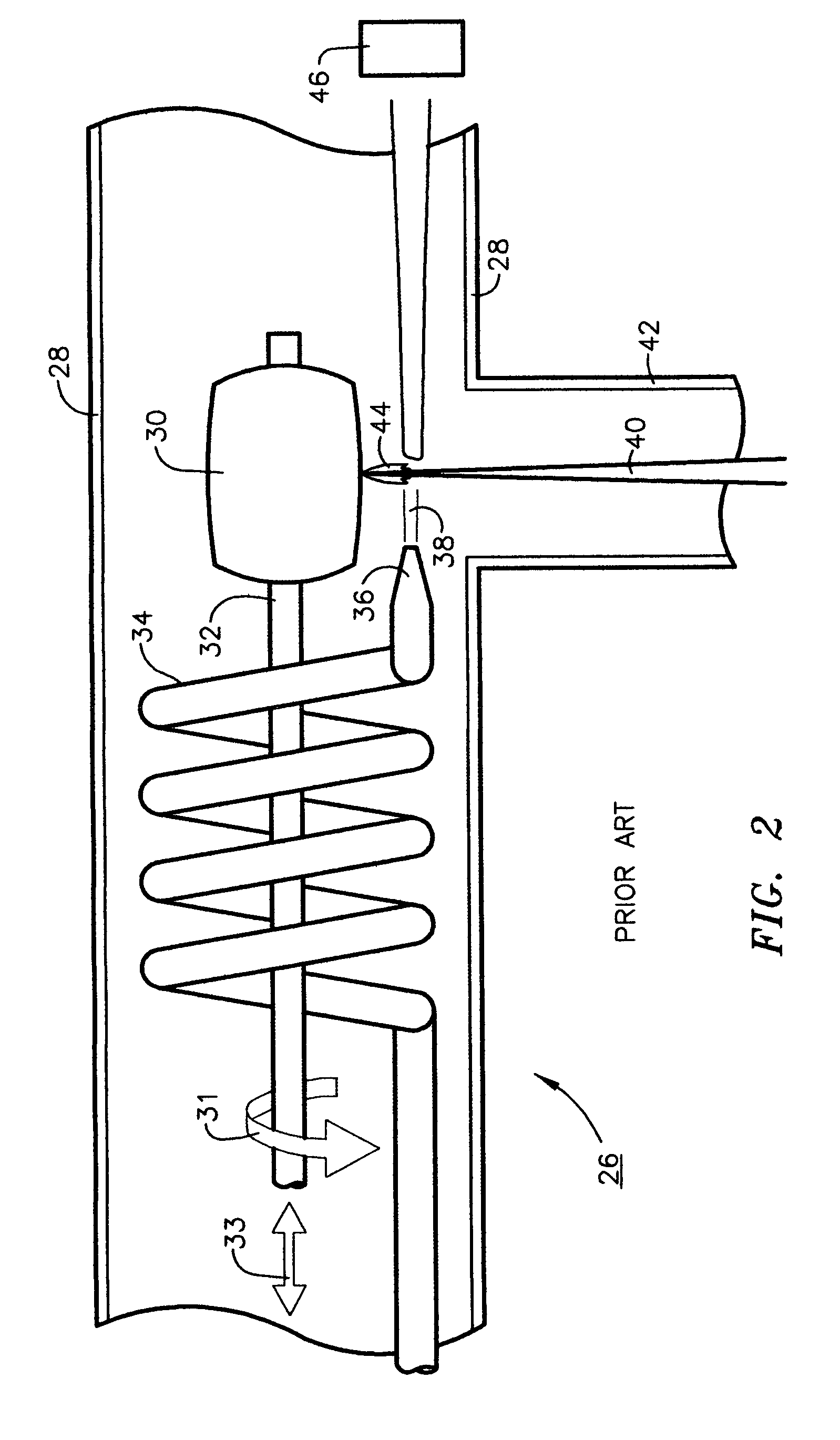Laser ablative synthesis of carbon nanotubes
a carbon nanotube and laser ablative technology, applied in the direction of chemistry apparatus and processes, manufacturing tools, electric/magnetic/electromagnetic heating, etc., can solve the problems of limited flowpaths that cannot be readily modified for optimal apparatus operation, and the production apparatus of nanotubes, etc., to achieve easy modification for production efficiency optimization, simplified apparatus, and reduced heat up and cool down time
- Summary
- Abstract
- Description
- Claims
- Application Information
AI Technical Summary
Benefits of technology
Problems solved by technology
Method used
Image
Examples
Embodiment Construction
[0014]Referring now to the accompanying drawings, as shown in FIG. 1, the original front-pumped chamber 10 utilized to produce carbon nanotubes included a vacuum chamber 12 maintained at about 500 torr and 1000° C., a graphite / catalyst target 14, an argon flow as depicted by arrow 16 and a laser beam 18 that interacted in well-known fashion to produce a plasma plume 20 that in turn resulted in the formation of a nanotube vortex 22 that, driven by argon flow 16, resulted in movement of vortex 22 toward and onto a target at 24.
[0015]While such an apparatus was capable of producing carbon nanotubes, its production levels were very low and demanded improvement.
[0016]FIG. 2 depicts one of the first side-pumped synthesis chambers for the production of carbon nanotubes designed to improve the level of production of carbon nanotubes over the levels achievable with the design of FIG. 1.
[0017]As shown in FIG. 2 the prior art side-pumped synthesis chamber 26 comprised a chamber furnace 28 main...
PUM
| Property | Measurement | Unit |
|---|---|---|
| temperature | aaaaa | aaaaa |
| length | aaaaa | aaaaa |
| length | aaaaa | aaaaa |
Abstract
Description
Claims
Application Information
 Login to View More
Login to View More - R&D
- Intellectual Property
- Life Sciences
- Materials
- Tech Scout
- Unparalleled Data Quality
- Higher Quality Content
- 60% Fewer Hallucinations
Browse by: Latest US Patents, China's latest patents, Technical Efficacy Thesaurus, Application Domain, Technology Topic, Popular Technical Reports.
© 2025 PatSnap. All rights reserved.Legal|Privacy policy|Modern Slavery Act Transparency Statement|Sitemap|About US| Contact US: help@patsnap.com



